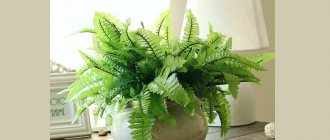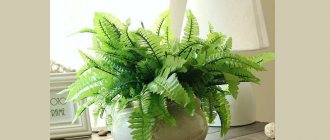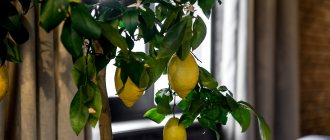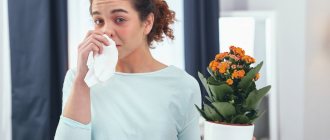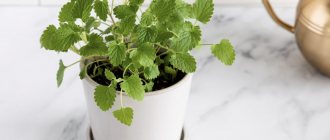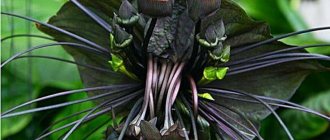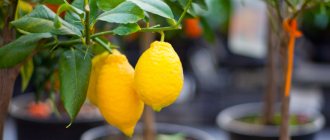Indoor plants are a seemingly completely ordinary and understandable thing. However, when it comes to buying them, it turns out that very few people really understand them: such a huge selection, so many different nuances - your head is spinning. We will tell you in this article which indoor plants are useful to keep at home and which are not.
Useful properties of indoor plants
Proper selection of indoor plants improves the microclimate in the house and the well-being of all its inhabitants. If you're still wondering whether to buy your first flower pot, here are some reasons for you.
Humidifier . During the heating season, the moisture level in the house drops to 20-30 percent, although 60 percent is considered the norm. Among the consequences of low humidity are dry mucous membranes of the nose and throat, flaking of the skin, the development of allergies, and respiratory diseases. Dry air is bad for wooden furniture and parquet floors. Growing indoor plants is one way to increase indoor humidity.
Plants that actively release moisture:
- Anthurium;
- Aglaonema (Aglaonema);
- Dieffenbachia;
- Maranta;
- Monstera;
- Nephrolepis;
- Philodendron;
- Hedera (Hedera algeriensis);
- Aechmea.
It should be noted that to increase air humidity to normal you will need several plants - at least 10.
Air filter . Phytofilter plants absorb harmful volatile substances and electromagnetic waves. The most unpretentious of these plants is chlorophytum - it traps harmful substances contained in furniture, plastic, and tobacco smoke. Plants belonging to the following genera reduce the amount of dust and microorganisms: Sansevieria, Tradescantia, Pelargonium, Begonia, Kalanchoë and Peperomia. It is believed that they are the best indoor plants for purifying the air.
Home doctor . Plants secrete biologically active substances (phytoncides) that suppress the growth and development of harmful microorganisms. They improve your mood, increase your performance, help you relax and fall asleep. Saintpaulia, myrtle (Mȳrtus) and conifers are known for their calming effects. Keep these in mind if you're looking for the best indoor plants for your bedroom.
Vegetable garden on the windowsill . Cultivating garden plants allows you to literally enjoy the fruits of your labor. Set up a mini-garden on the windowsill in your kitchen and fresh herbs will always be at hand.
How to choose plants with the right energy for each room?
A person’s good mood and well-being are largely determined by the influence of indoor plants, because they improve the microclimate of the room, promote filtration and sedimentation of dust, increase air humidity, reduce the carbon dioxide content in it, “pull out” many harmful impurities from it, and help relieve stress. And this is not all - after all, plants have their own energy, positive, cleansing . Biophysicists and biologists, conducting experiments with plants, never cease to be amazed at their good potential.
The bedroom is a very special room, functionally one of the most important in the interior of the house. The best option for a bedroom would be to place plants alone. Here the basic rule is that it is better to focus on one or two plants, “soloists” of expressive form, of fairly large size, than to create many compositions using small ones. There should be unpretentious plants in the bedroom, because high humidity cannot be created in this room. But most importantly, they should promote sound sleep and 100% relaxation.
Various varieties of ficus are suitable for the bedroom, but the best are ficus benjamina, ficus rubbery, ficus lyre . Most ficus plants are unpretentious, successfully neutralize harmful impurities from the surrounding air, and are suitable for most interior styles. But there is one more feature - their strong energy, which a person can feed on during sleep. Moreover, this energy is special, “soft” - it relieves fuss and nervousness, and a feeling of comfort and coziness appears. Palm trees - if it is possible to place them closer to the window - are a great option. The best for the bedroom are Howea Forstera, Canarian date, Chamedorea graceful (mountain palm) . They refresh the air and, like ficuses, “feed” energy.
Dracaena absorbs harmful impurities, but this is not the main thing - it is able to “delay” many of our ailments, headaches, for example, and not only. It seems to “get used” to a person and over time comes into more and more energetic contact with him, enhancing its healing effect.
How to properly care for indoor orchids
Orchids are now found on every continent except Antarctica. Growing this exotic plant on a windowsill is not so difficult if you get used to the idea that all the rules for caring for ordinary plants do not apply to it.
Read more
The champion in “pulling off” bad energy and various related diseases is, of course, Monstera . They say about her that she is an “energy vampire,” and so it is, but this is a so-called “solar” vampire (as science defines it), he is not able to take on good energy, he feeds only on “negative” energy. It is thanks to this feature that Monstera promotes deepest relaxation, complete rest and deep sleep. Indapsus, passionflower, philodendron and cissus have a similar effect, only slightly weaker . Fatsia japonica is good at increasing air humidity, thereby promoting good sleep and healing the heart and lungs. This is an energy “donor”, so in the morning we will feel a surge of strength.
Indoor orange and tangerine can also give us a session of pleasant relaxation, combining aromatherapy and healing procedures, reduces blood pressure and disinfects the air.
The arrangement of an office and its design are directly related to successful work and career development. It is advisable to place quite a lot of plants in the office, and here’s why. The office has features: the presence of various equipment, a computer, books, business papers, cabinets and racks - which means that electromagnetic radiation, dust, fumes of various chemical compounds are “guaranteed” there - they are regularly “supplied” by the materials from which the furniture is made, various furnishings, as well as wallpaper, plastics, various dyes.
And the electromagnetic field depends not only on the operating equipment, but also on the presence of many sockets in the room. Therefore, the plants in the office must, firstly, cope with all these problems, secondly, they themselves must be able to grow in such conditions, and thirdly, they must correspond to the business style.
Ace
feng shui specialist
The wealth sector, where it is best to place an office, workshop or living room, corresponds to the element of the small Tree. Therefore, all large and small healthy plants are appropriate here. But plants with large, thick, round and oval leaves are considered the most favorable. Such as the ficus or “money tree”.
Chlorophytum crested (“sedge”) is suitable for the office . Without requiring special care, this amazing plant cleanses the atmosphere of the apartment from harmful impurities and electromagnetic radiation day and night. Noble laurel will fit perfectly into the decor . With it, you can discreetly receive treatment for headaches caused by computer, reading and writing. It releases special volatile substances that improve cerebral circulation and simultaneously destroy microbes in the air of the room. Just like laurel, lemon can reduce the number of viruses and germs in the air by 70%. It is necessary for both heart patients and asthmatics; it effectively lowers blood pressure.
The aroma of lemon relieves stress and increases productivity by more than 30%, which Western companies have long taken note of and now use this aromatherapy product in their offices. Sansevieria, or “pike tail” , is a champion in air purification and neutralization of computer radiation. At the same time, there are no problems with watering, fertilizing, or dust - the plant is a succulent. Abutilon is a wonderful decoration for your office . Its leaves are similar to maple, and its flowers are very striking. Abutilone simultaneously purifies the air and moisturizes it. However, this unpretentious plant requires space, so it is better to plant it if you have a large office.
Some succulents, such as haworthia or crassula (“money tree”), . Our bioresonance therapy specialists note their powerful energy. Maybe that's why in China they are considered to bring money luck?
For the living room, the main thing is to create a cheerful, positive atmosphere that promotes communication. At the same time, plants should be expressive, and the presence of those that bloom with bright flowers, especially yellow and pink, is desirable. Taking into account the energy requirements, the best for the living room would be cissus, laurel, aucuba, indoor roses, begonia, most hanging plants, balsam, asparagus, tradescantia, chrysanthemum, cyclamen.
kitchen area is not suitable for most plants due to the abundance of technology and its microclimate. However, herbs in pots, onions and nightshade crops (for example, mini-peppers) , since they need a certain amount of “harmful” radiation and elevated temperatures to grow and develop. Also, herbs also fill the kitchen with culinary aromas.
A children's room places many demands on plants. Firstly, they must be safe for the child, and then everything else. Attention! Under no circumstances should nightshade, large-rooted alocasia (toxic sap), dieffenbachia (burning sap), pelargonium (allergen), oleander and synadenium (poisonous plants) be placed in a nursery. Cacti are also not recommended - the child may get hurt.
Suitable plants in terms of air purification, the release of useful substances, as well as positive energy for the child are plants such as date palm, fig, begonia, Saintpaulia, Tradescantia, Kalanchoe, laurel, citrus fruits, Chinese hibiscus, common myrtle . There should be a few plants in the nursery, 3-4 is enough, considering that this is not the largest room in the house, and high humidity should not be created there. If the plants in the nursery are chosen correctly, then being near them in half an hour already restores the body’s defenses.
Healthy plants
Plants create home comfort, improve mood, and also improve well-being. Often medicinal plants stand on windowsills and balconies in almost every home as decoration, at the same time they can be used to prepare medicinal decoctions and tinctures, and cosmetic procedures.
1. Aloe contains many useful substances: antioxidants, B vitamins, enzymes, acids. Juice diluted with water is used to treat a runny nose; leaf pulp - for the treatment of wounds, burns, calluses and corns; in cosmetology it is used as a means for moisturizing and growing hair, eliminating acne. Aloe accelerates cell regeneration processes, and therefore is actively used in the treatment of burns, wounds, cuts and other injuries to the skin. Suppresses the proliferation of various microbes: staphylococci, streptococci, typhoid and diphtheria bacilli. The greatest therapeutic effect is on the lower leaves of aloe, which are the earliest to form on the plant.
2. Kalanchoe is called indoor ginseng. Kalanchoe juice is mixed with honey and propolis extract, and this mixture is used to lubricate the throat for sore throat. An aqueous solution of Kalanchoe juice will help with coughing. The leaves are applied to speed up the healing of wounds. To relieve pain from rheumatism, you can rub the joints with tincture. Toothache subsides if you place a cotton wool moistened with Kalanchoe juice in the area of caries. To stimulate appetite and improve digestion, use an infusion of Kalanchoe juice, honey and Cahors.
3. Echinacea is known as an immune booster. It is used to stimulate the immune system for respiratory infections and chronic diseases. In addition, it is used for burns, to heal wounds and ulcers.
4. Yarrow is used for uterine bleeding; infusions from this plant help with ulcers, gastritis and other diseases of the gastrointestinal tract. An infusion of yarrow leaves and inflorescences is used externally for bruises, wounds and burns.
5. Laurel is not only a spice, but also a medicine that has a powerful bactericidal effect. Laurel eliminates spasms of the intestines and bile ducts, helps remove stones from the kidneys and liver, and relieves pain in the joints.
6. Pelargonium (indoor geranium) helps fight stress, neuroses and insomnia. In order to reveal its beneficial properties, you do not need to make any tinctures or decoctions - just put a pot of geranium in your bedroom. It has been proven to help with ear colds and also kills staphylococci and streptococci. Geranium tincture is drunk for angina pectoris, gastritis, bronchitis and kidney stones. Gargling with a decoction of pelargonium helps with stomatitis. The juice is used as a hemostatic agent.
7. Ginseng is a panacea in Asian culture. It is believed that ginseng preparations speed up metabolism, relieve fatigue and improve appetite. Ginseng is indicated for adults to improve performance and mental activity. Reduces cholesterol and blood sugar levels, stimulates the adrenal glands, and increases blood pressure.
Houseplants that purify the air
Indoor plants are able to capture and neutralize harmful substances. An enclosed space constantly contains particles of harmful volatile substances:
- Formaldehyde irritates the mucous membranes of the eyes, nose and throat, causing skin itching, allergies, and asthma. Contained in carpets and furniture upholstery, tobacco smoke, and plastic dishes.
- Trichlorethylene is a carcinogen, affects the liver and kidneys, and causes irritation to the skin and mucous membranes. Contained in household chemicals and finishing materials.
- Benzene is a carcinogen, accumulates in adipose tissue, leading to the development of leukemia. Provokes shortness of breath and convulsions, lowers blood pressure. Found in cleaning and detergents, tobacco smoke, finishing materials, rubber products.
- Ammonia causes irritation and swelling of the airways, causing chest pain. Contained in electronics, tobacco smoke, and household chemicals.
- Xylene leads to irritation of the skin, mucous membranes of the eyes and nose. Used in the production of plastics, finishing materials, and glue. Contained in exhaust gases and tobacco smoke.
If you are looking for the best indoor plant for your home that purifies the air well, take a look at these types:
1. Chlorophytum comosum - a bushy plant with small white flowers actively fights formaldehyde, carbon monoxide, benzene and xylene.
2. Sansevieria trifasciata is a hardy and unpretentious plant. Neutralizes formaldehyde, benzene, trichlorethylene. At night, it absorbs carbon dioxide and releases oxygen.
3. Dracaena marginata removes xylene, trichlorethylene and formaldehyde from the air.
4. Anthurium andraeanum humidifies the air, converts toluene and xylene into harmless compounds.
5. Gerbera jamesonii neutralizes benzene, formaldehyde and trichlorethylene.
6. Moderate Aglaonema (Aglaonema modestum) effectively purifies the air from formaldehyde and benzene. Be careful - the juice and berries of the plant are poisonous.
7. Climbing ivy (Hedera helix) removes formaldehyde, trichlorethylene, carbon monoxide, benzene.
8. Nephrolepis exaltata humidifies and purifies the air from formaldehyde, xylenes and toluene.
9. Spathiphyllum 'Mauna Loa' effectively combats all types of harmful volatile organic compounds.
10. Garden chrysanthemum (Chrysanthemum morifolium) removes ammonia, formaldehyde, benzene, xylenes and trichlorethylene from the air.
11. Chamaedorea seifrizii purifies the air from substances such as benzene, trichlorethylene and formaldehyde.
The influence of indoor plants on human health
The influence of indoor plants on human health
Plants can do more
than just livening up a room and lifting your mood,
they can improve your health.
Since ancient times, people have decorated their homes and clothes with flowers, and given them as gifts. Landscaping your home not only decorates the interior, but also has a positive effect on the atmosphere in the room, human health and mood.
Science has long established the benefits of keeping plants indoors. In 1989, American researchers from NASA published a study on the ability of plants to neutralize toxins in the air.
Some benefits of having plants in your home:
- increase in positive emotions and reduction in feelings of anxiety, anger and sadness; reduction in stress levels; control of humidity within the optimal level for human health; cooling effect; phytoncidal properties of plants that suppress the activity of harmful microorganisms; absorption of carbon dioxide and release of oxygen; rapid recovery of mental fatigue ;interior improvement.
Some useful indoor plants
Ficus and ivy, these plants are simply record holders for air purification. They are able to absorb a lot of toxic substances, including ammonia, benzene, and formaldehyde. Ficus, like a sponge, absorbs not only harmful substances, but also attracts dust. Ficus is unpretentious; this plant loves sunlight and moisture, but also tolerates partial shade. It’s better not to keep ivy on the windowsill; it loves partial shade and moderate watering.
Mother-in-law's tongue (Sansevieria) this plant absorbs odors very well. It is recommended to place it in the kitchen. Mother-in-law's tongue is very easy to care for and grows happily both on a window and in a dimly lit room. It does not require much time and attention to care for, but it will bring a living corner of nature into your home and will be beneficial for your health.
Bamboo palm (hamedorea) this plant humidifies the air and filters substances released by plastic. Hamedorea is hardy, loves sun, moderate watering. At the bottom of the pot you can make drainage from sand or expanded clay.
Chlorophytum traps exhaust gases very well. Therefore, for those who live on the first floors, this plant is simply necessary. In addition, chlorophytum produces phytoncides that have a bactericidal effect. Caring for the plant is also easy - you just need to make sure that the soil is always moist.
Schefflera wonderfully purifies the air in a room where people smoke. The plant neutralizes nicotine and tars contained in tobacco smoke. The plant also increases humidity and ozonates the air. Schefflera is an unpretentious plant. But be careful: all parts of Schefflera are slightly poisonous and can cause contact dermatitis in some people.
Golden lotus (Scindapsus aureus) purifies the air from benzene, a harmful compound present in every third city apartment, especially those with windows facing the highway. Golden lotus loves sunlight, but tolerates partial shade well and does not require frequent watering.
Dracaena is a perennial plant that neutralizes such a harmful substance as formaldehyde, the toxic fumes of which are emitted from varnish coatings, chipboard, PVC and other synthetic materials. Dracaena loves partial shade and moderate watering, but also grows well in sunny windows.
The fern is able to live well anywhere in the house because it itself absorbs energy from the environment. For example, if a pot with it is placed on a TV, it absorbs electromagnetic radiation harmful to humans and only becomes more magnificent and better. In this way, it has a beneficial effect - it removes harmful radiation from household appliances.
Tradescantia is of great benefit to humans. She has positive energy that nourishes a person. Due to this, your well-being improves.
Geranium is a plant like a personal psychoanalyst. The aroma of geranium perfectly relieves stress. In addition, it normalizes blood pressure. But only if you are not allergic to this fragrant flower. Geranium serves as a kind of determinant of health: if the smell of geranium is unpleasant, then you are healthy, and if you like it, then your overexcited nervous system needs to be treated. It would be best to place the plant in the bedroom. The scent of geranium is calming and helps you fall asleep. You can also place the plant in the kitchen as a fighter against kitchen odors.
The cactus moderately nourishes a person with energy. Species with long needles are especially beneficial for human health. They kill harmful microorganisms and also reduce air ionization, which is created by electromagnetic radiation. Therefore, it doesn’t hurt to place such a plant near your computer monitor or TV screen. Cactus promotes good rest and recuperation.
Laurel
has a positive effect on the cardiovascular system, relieves intestinal spasms, and helps cleanse the bile ducts. It is also known for releasing substances that are harmful to viruses and bacteria.
Orchid
It is believed that it is capable of cleansing and healing any, even the sickest, body. An orchid will put things in order in your thoughts, calm you down if necessary, give you hope for the best, and teach you to enjoy life.
Orchids of different colors also differ in their properties. Red ones provide strength and energy, white ones make a good person even better, pink ones give the love of the right person, yellow ones encourage creativity.
Kalanchoe
has protective and healing properties. It reflects any negative energy and relieves depression, treats runny nose and even sinusitis.
Aloe
has healing ability. The juice of this plant can be used as a laxative, anti-inflammatory, bactericidal agent, improves appetite and digestion.
Violets, ferns, and cyclamen will help increase the humidity in the room.
. These moisture-loving indoor plants return moisture to us through their leaves.
Monstera is a large climbing vine. Outwardly this is a very beautiful plant, but it lives off the energy of all living things. Sucks life energy from people too. It is especially dangerous to keep this plant in the bedroom.
Cypress growing in an apartment is dangerous for humans. Our ancient ancestors considered it the tree of death.
Thuja has similar properties. In addition, it is poisonous, especially its berries. It should not be grown in areas where you relax, eat or sleep.
Currently, many people grow seedlings on windows. This is also not very useful for a person, as it will have a negative effect on your well-being. It is better to allocate a room outside the room for this.
Remember the main thing - no matter what plants you have in your apartment or house, you should not place them near your sleeping place, because at night they absorb oxygen, releasing carbon dioxide and releasing negative energy.
Their energy cycle is built on daytime absorption of bad energy and nighttime cleansing - the release of negative energy.
is especially harmful in this regard .
At night, its large leaves emit a huge amount of carbon dioxide and a flow of negative energy.
The only thing doctors warn about is: try to place plants in such a way that they do not interfere with the penetration of daylight into the room. Therefore, do not cover all the window sills with flowerpots, make sure there is normal lighting in the home.
Flowers are a source of beauty and tenderness, so plant them in your homes and let caring for them bring you only pleasure and joy.
Remember that even unpretentious plants need your care. Give the plant love, and it will return to you with a vengeance.
The Best Houseplants for the Bedroom
The atmosphere in the bedroom should be soft and relaxing. Everything that surrounds you should calm you down and promote deep sleep, including indoor plants. You need to choose them with special attention, because some flowers can cause restless sleep and poor health. During sleep, we breathe rarely and deeply, so it is important that the air in the bedroom is clean and humid. Choose plants that can purify and disinfect the air, such as chlorophytum or begonia.
Usually little sunlight gets into the rest room, so preference should be given to shade-loving and unpretentious plants. When choosing landscaping for the bedroom, look for decorative foliage plants without bright flowers. The light soothing aroma will help you relax and fall asleep. For a restful sleep, you can place anthurium or spathiphyllum in the bedroom. Unpretentious geranium relieves headaches and repels flying insects.
Here are a few more plants that are great for the bedroom:
- Chlorophytum.
- Aloe.
- Spathiphyllum.
- Kalanchoe.
- Geranium.
- Begonia.
- Sansevieria.
- Myrtle.
- Jasmine.
- Lavender.
We’ll talk about which indoor plants you can’t keep in the bedroom below.
What plants to place in the children's room
It is extremely important to create an optimal microclimate in the children's room. In the current environmental conditions, the presence of plants in a child’s room is mandatory. They collect dust, moisten, disinfect the air, and saturate it with oxygen. However, selecting plants for a nursery is not an easy task. There should be no poisonous, prickly or strong-smelling plants in the child’s room. Moreover, you should explain to the child that the plant is alive, and therefore requires care and attention.
Here are some good plant options for a children's room:
- Peperomia purifies and disinfects the air. A shade-loving plant with beautiful flowers resembling spikelets. Will forgive any oversights.
- Lemon tree has antimicrobial properties. Its leaves release essential oils, due to which the air in the room is filled with freshness and purity. The subtle citrus aroma does not interfere with sleep.
- Sansevieria is an unpretentious plant with beautiful leaves and small white flowers. Purifies the air from harmful volatile substances.
- Chlorophytum is a natural air filter. Absorbs all harmful substances and releases oxygen. An absolutely safe plant - both children and animals love to chew it.
- Violet is a plant with small bright flowers and leaves that are delicate to the touch. She is pleasant to watch and easy to care for.
- Fern relieves stress from an overabundance of information. Loves shade and frequent spraying.
- Tradescantia is a safe, low-maintenance ornamental plant. Some types of Tradescantia have interesting purple leaves.
- Begonia releases essential oils that purify the air in the room from dust and bacteria. Begonia leaves have slight, harmless pubescence.
Many houseplants are toxic. If handled correctly, they do not threaten an adult, but a child can easily touch or eat a beautiful flower. Poisonous plant sap can cause swelling of the larynx and irritation of the eyes and skin.
Do not place these plants in the children's room under any circumstances:
- monstera;
- dieffenbachia;
- alocasia;
- oleander;
- mandevilla;
- adenium;
- spurge;
- Akalifa.
What types of homemade medicinal flowers exist?
Many gardeners often notice that indoor flowers have a positive or negative effect on the body. This is due to the fact that in addition to their main function (decorating the room and purifying the air), they also help cope with many diseases.
The most commonly planted plants for medicinal purposes are:
- Echinacea. A unique specimen of the Asteraceae family is known for its properties that help strengthen the immune system. It is no coincidence that during the cold season, doctors recommend using echinacea tincture. In addition, drugs based on it are used in the treatment of infectious diseases, arthritis, mumps and burns of varying degrees. Echinacea suppresses the effects of viruses and bacteria - this has been proven in studies conducted in many European countries;
- geranium. It has an anti-inflammatory effect and helps reduce pain, normalizes the functioning of the gastrointestinal tract. Helps get rid of boils, ulcers, rashes (in the form of lotions).
- Tradescantia. This flower is often grown in apartments. Its use helps in the treatment of gastrointestinal diseases, sore throats, colds, and some forms of tuberculosis. In addition, Tradescantia leaves absorb phytoncides;
- Crassula. Used for prevention and auxiliary treatment for various pathologies. Tinctures and decoctions based on it are effective in the treatment of bronchitis, gastrointestinal diseases, sinusitis, rhinitis, and tuberculosis. Easy to care for, grows well even in a shaded area;
- aloe. One of the most popular species, it is grown even by those who are not involved in floriculture. Aloe foliage and its juice have a powerful wound-healing and anti-inflammatory effect. There are many recipes for tinctures, ointments, and cosmetics that contain aloe;
- callisia. This flower is loved by many gardeners for its aesthetic appearance and beneficial properties. Callisia is effective for burns, lichen, and cleansing pustules. Medicines based on it are used in the treatment of cholelithiasis, type 2 diabetes mellitus, obesity, gastrointestinal diseases, and also to strengthen the immune system;
- Indian onion. Despite the fact that the plant is poisonous, it has medicinal properties, so it can only be used externally. To avoid negative consequences, this should definitely be taken into account. Indian onion is used in the treatment of dermatological diseases and joint diseases, rheumatism and radiculitis. Herpes, cuts and growths are treated with ointment from the components of the plant. In addition, the flower cleanses the air well of heavy metals;
- succulent. Plants are easy to care for and have some medicinal properties: they promote wound healing, thin mucus, normalize digestion, and are effective for rheumatism and radiculitis. All types of succulents have analgesic and anti-inflammatory effects. Representatives of this species contain a lot of useful substances, so they are used in cooking to prepare some dishes.
Attention! Not all indoor plants can be consumed internally. Certain species, for example, chlorophytum, purify the air by absorbing harmful substances, so they can only be used externally for medicinal purposes.
What flowers are good to keep in the kitchen?
The kitchen is not the best place to grow indoor plants. Even the most unpretentious flower will not withstand temperature changes, splashes of grease and soapy water. When choosing landscaping for the kitchen, focus not only on the appearance of the plant, but also on the conditions under which it is kept.
Choose plants with glossy leaves that can be easily wiped with a damp sponge (crassula, aloe, chlorophytum). Drought-resistant plants that can withstand temperature changes and do not require special care are suitable for landscaping the kitchen:
Golden scindapsus (Scindapsus aureus) is an unpretentious decorative foliage plant. Withstands temperature changes and artificial lighting. Purifies the air from harmful substances. Scindapsus is a fast-growing vine, so it is recommended to grow it in hanging pots.
Sansevieria trifasciata is a hardy and unpretentious plant. Tolerates temperature changes well. Neutralizes volatile harmful substances.
Zamioculcas zamiifolia is an ornamental foliage plant known as the “money tree.” It does not tolerate excess moisture, so it is not recommended to place it near the sink.
Edible plants come in handy in the kitchen like no other. They can be grown all year round and used in cooking. Basil, dill, parsley, green onions - greens that will easily take root in your kitchen. If your windows face south or east, try growing herbs (thyme, rosemary, lavender, mint).
What flowers are useful to keep near your workplace?
There is an opinion that indoor plants can neutralize harmful electromagnetic radiation from a computer monitor. Moreover, the most effective defender is called the cactus. However, neither a cactus nor any other plant can protect against electromagnetic radiation. It is not so much the radiation from the monitor that causes tangible harm, but the light from it. People who work at a computer for a long time experience burning and dry eyes, fatigue and insomnia.
It follows from this that planting indoor plants in the work area is worth it to improve air quality, and not to combat radiation. Pay attention to plants with high levels of humidification and air purification (chlorophytum, begonia). The more such plants, the better.
When working with a computer, it is important to rest your eyes. Take a break from work and admire the beautiful blooms or unusual leaf patterns. Plants create a cozy atmosphere at home and in the office, give positive emotions, and help fight stress. It is important that you like the plant. Pay attention to the design, make your workplace aesthetically attractive.
Choose unpretentious, shade-loving plants. They will not suffer if you go on an unplanned vacation, but will patiently wait for their owner.
For those who want to get everything at once, we recommend purchasing a florarium - a small garden of succulents in a closed glass pot. Constant humidity and temperature are maintained inside. You can buy a florarium ready-made or assemble it yourself.
Plants suitable for the workplace:
- peperomia;
- fittonia;
- tradescantia;
- philodendron;
- Crassula;
- aloe;
- aspidistra;
- cactus;
- Sansevieria.
LiveInternetLiveInternet
The energy vibrations of a plant are perceived by a person more intuitively than consciously, but in accordance with their energy vibration. If you suddenly stop liking the beloved birch ficus for many years, then the fact may be that you no longer need its emissions due to changes in the circumstances of your life. Researchers give their subjective assessments of the energy emissions of plants, and we, comparing them with each other, will try to find out the degree of objectivity of these assessments.
In Russia, A. Sukhorukov and ELurgina are studying
the effects of plants on humans .
They divided the studied plants into three groups: the first - with a positive effect on humans; the second - with neutral; The third group included, conditionally, plants that could have a negative impact. The first group included: begonia, primrose, violet, cyclamen, hoya, Kalanchoe, spathiphyllum . Hoffmann also gives all these plants a positive assessment. The Russians also included pelargonium, fittonia, fuchsia, syngonium, crassula and golden mustache in this group, about which there is no information in Hoffmann’s book (apparently, she did not study them). In addition, the first group mentions cacti, ficus and saxifrage, about which opinions differ. So, according to Hoffmann, cacti instill fear, wound energetically and make them aggressive, but at the same time, cacti are an excellent defense against negative energy that comes from the outside (computers). It is difficult to imagine the feeling of fear from small cacti, but if you go to a greenhouse where huge cacti-trees are grown, you can be convinced of this.
ficus received a double rating - it is suitable for passive people, but not suitable for small children and pets. May be detrimental to intense mental work. Saxifraga, according to Hoffmann, has a somewhat chaotic effect, but is an ideal plant for workspaces where it is necessary to achieve a single goal.
Purgina included plants that are neutral for humans: tradescantia, aloe, spotted spurge, pachistachis, cloves, gloxinia, hydrangea and balsam . This group includes both flowering plants and ornamental green plants, so the question immediately arises at what period of life flowering plants are considered. Hoffmann notes that during the flowering period, gloxinia, hydrangea and balsam have a positive effect on humans, which comes from the flowers, but during the dormant period they have no effect. She has not studied the influence of pachystachys, cloves and spotted milkweed, but about aloe she says that it focuses energy, gives strength and, figuratively speaking, brings down to earth dreamers with their heads in the clouds.
In the third group, Purgin very carefully, stipulating only the likelihood of a negative impact, includes: fern, monstera, orchid, asparagus, philodendron, brittle bell, chlorophytum and cyperus. Hoffmann finds positive effects in chlorophytum, cyperus, monstera, two types of orchids (oncidium and paphiopedilum) and two types of ferns. Thus, we can state a very high agreement of estimates among different studies. We find the greatest divergence of opinions regarding the third group of plants, which allegedly can have a negative effect on humans, so we will pay special attention to Purgina’s recommendation when choosing flowers for your home to listen to yourself, intuitively determining whether this plant is suitable for you or not. Both researchers recommend placing hoya in the bedroom. It should be added to this recommendation that some types of hoya smell very strongly during the flowering period and can cause headaches, so you should not place them in the bedroom during this period.
Eva-Katharina Hoffmann gives these assessments of the most common indoor plants.
Adiantum helps strengthen feminine energy (yin energy). “Venus hair” should not stand next to or be combined with “aggressive” plants with thorns or sharp leaves. It will not grow in such a neighborhood and may lose all its strength. Impact: affects mainly the nervous system (parasympathetic) and promotes blood supply to the extremities. Fearful people receive an impulse to “get together” and are freed from their chosen self-isolation.
MAIDENHAIR
Aloe reduces the content of toxic substances, releases OXYGEN at night and absorbs carbon dioxide. Great for the bedroom! Impact: focuses energy, gives strength and, figuratively speaking, brings down to earth dreamers with their heads in the clouds. Helps indecisive people take action. Provides excellent protection against electrosmog.
ALOE
Araucaria is good for work areas, such as the reception area, but has a bad effect on people with a choleric temperament. The energy of araucaria can help you learn something new about yourself. Just as an indoor spruce tree needs space to grow evenly, you need space and time for spiritual and intellectual growth. Impact: the plant activates all body functions, has a stimulating effect and promotes creative and vital activity. It humidifies the air well and eliminates toxic substances.
ARAUCARIA
Asparagus . Impact: This is an energy fan that will help you when you have difficulties at work. Excellent for work and study areas. It should not be kept in the bedroom!
/ASPARAGUS
Impatiens : The plant's energy fluctuations increase when planted in groups. Impact: calls slow people to action and slows down those who are too hasty. White flowers stimulate spiritual activity, pink flowers stimulate emotional activity, purple flowers stimulate mental activity, red flowers stimulate physical activity, and orange flowers promote sexual activity.
BALSAM
Common bamboo . Impact: gives energy to the room, people and animals. It acts both as a catalyst and as a balancing factor.
ORDINARY BAMBOO.
begonia , hybrids. The effectiveness of these plants increases when they are grown in a group. They are well suited for hospitals, nursing homes, and for people who lack energy and good mood. Excellent for removing toxic substances. Impact: the hot “radiation” of this plant will allow you to forget about everyday problems and help the emergence of new ideas and desires.
BEGONIA
Hibiscus or Chinese rose . Effects: This plant with flowers of cheerful colors promotes enterprise, friendliness, willingness to contact people, determination and helps introverts to become more open.
HIBISCUS
Hippeastrum : This plant should not be placed in bedrooms because it gives vigor. After flowering it does not have any energetic power. Impact: Fresh, stimulating energy helps maintain peace of mind and make the right decisions.
HIPPEASTRUM
Gloxinia : the plant is suitable when you need to end the old and start a new life. Impact: Thanks to its wide-open flowers, Gloxinia radiates energy. It acts like a magic key that can open closed people and set stagnant energy into motion.
Hydrangea . Impact: these plants are recommended primarily for those people who suffer from melancholy and depression or are fixated on negative thoughts. Hydrangeas promote creativity and spontaneity in action.
HYDRANGEA
Guzmania : a red, luminous, very erotic plant that activates primarily masculine energy and, when in flower, is well suited for the bedroom. Impact: activates and mobilizes, first of all, people who daydream, “nights and introverts”.
Dieffenbachia : all parts of this plant are poisonous, making them dangerous for children and animals! Promotes good transpiration (sweat release), helps purify the air from xylene and toluene. Impact: the plant’s energy is concentrated inside and moves upward. It is well suited for people engaged in mental work and those who spend their lives at a desk. Activates both hemispheres of the brain, helps with cerebral circulatory disorders.
DIFFENBACHIA
Dracaena : a very good indoor plant that provides a pleasant indoor climate and positive energy. It neutralizes chemicals well, especially formaldehyde, as well as trichlorethylene, which pollutes the air from laser printers and photocopying machines. Impact: excites, gives vitality, harmonizes, has the same effect on people and animals.
Jasmine . Impact: affects the erotic sphere, arouses a joyful state when meeting other people. Impact: Helps bridge broken relationships.
JASMINE
Zebrina can help bring ideas to fruition and avoid difficulties. The most seemingly impossible projects will go through like clockwork...
ZEBRINA
Cacti . Impact: they put you in fear, hurt you energetically and make you aggressive. The longer and thinner their spines, the more aggressive the plant. People who have constant contact with cacti are advised to keep their distance so as not to become aggressive or depressed. Cacti are excellent protectors against negative energy that comes from outside.
CACTI
Kalanchoe : if many plants are placed together, their inspiring energy will increase. Kalanchoe eliminates harmful substances. Impact: helps to lift the mood, especially in people who are in a minor mood in the morning..
KALANCHOE
Calceolaria . Impact: increases activity and brings joy. Those people who do not let anyone near them because it is difficult for them to express their feelings will be able to reveal their inner World with the help of calceolaria.
CALCEOLARIA
Saxifraga . Impact: has a chaotic effect, but allows you to realize that the small is part of the big, giving impetus to the comprehension of complex structures. Thanks to saxifrage, a person in his family or team begins to feel like a member of the team... and is better realized. An ideal plant for work spaces where it is necessary to achieve a single goal.
SAXIFRAGE
Dwarf rose, Chinese rose . Impact: opens our hearts and gives love.
Dwarf Rose
Coconut palm . Impact: Particularly beneficial for people who cannot express their feelings. People who are in dire need of love experience a special craving for this plant.
COCONUT PALM
Croton variegated : increases perseverance, helps achieve recognition, good for the workplace. Do not place it in the bedroom under any circumstances! The milky sap is poisonous, so you need to be careful with this plant and keep small children away from it. Impact: promotes motivation in uninitiated people. Gives impulses that do not allow you to quit halfway.
CROTON MOTIFIED
Lemon, orange : reacts to drafts, not suitable for small children. Impact: thanks to its smell, it promotes proper breathing. The problem of spasms in the head and neck area can be completely eliminated. Relieves fear of studying and fear of failure.
Arrowroot : This plant should never be placed in the bedroom, nursery or next to the desk. Arrowroot is a great office plant that helps humidify the air and eliminate harmful chemicals. Impact: helps to bring the job started to completion. Fearful people can use it to gain an energetic boost to self-defense.
MARANTA
Myrtle . Impact: the plant relieves fears and gives self-confidence. Does not get along well with people suffering from fungal diseases.
MYRTLE
Monstera : ideal for common rooms, humidifies the air very well. Impact: spreading peace in the room, Monstera harmonizes the atmosphere in the room, partially introducing active energy into it.
Nephrolepis : eliminates harmful chemicals such as formaldehyde, xylene and toluene, AND has an unusually high transpiration rate. It is ideal for rooms with heavy energy. Impact: has a positive effect on the nervous system.
Passiflora . Impact: helps people of an ascetic disposition to show more sensuality and enjoy life.
PASSIONFLOWER
Common ivy : this plant is a specialist in the destruction of formaldehyde and also neutralizes all other toxic substances. It should be placed away from small children and people suffering from skin diseases. Direct contact may cause allergic reactions. Impact: has a life-giving effect, creates a positive mood and arouses curiosity. Promotes the implementation of new ideas.
IVY
Primrose : direct contact with skin and mucous membranes can lead to allergic reactions and eczema. Do not place primrose in the nursery. Impact: amuses and excites, and when it grows in groups, the influence increases.
PRIMROSE
Poinsettia or spurge spurge : milky sap irritates the skin and mucous membranes, so it should be kept away from children and not placed in the bedroom. The plant neutralizes toxic substances. Impact: activates the heart and blood flow, improves mood in winter.
POINSETTIA
Rhododendron or azalea : eliminates harmful substances from the air. Impact: creates a feeling of joy, relaxes, brings peace and strengthens the nerves. Nice, friendly plant. Impact: Thanks to its exceptional vertical growth and vitality, it helps us consistently set emotional or ideological goals and achieve them. This plant is a fighter among houseplants and brings out both positive and negative emotions.
AZALEA
Sedum : the plant is not suitable for people who are too nervous and have a choleric temperament. Impact: this is a strong plant, which in its homeland withstands periods of drought, has a good aura for those people who do not know how to withstand emotional stress or are internally repressed.
SEDUM
Spathiphyllum : neutralizes harmful substances, effectively removes alcohol, acetone and formaldehyde from the air. Impact: energy moves powerfully from the flower upward, finding harmony from the leaves. Normalizes extreme fluctuations and is suitable for any place in the apartment and any person.
SPATHIPHYLLUM
Stapelia . Impact: deeply penetrating. Heals spiritual wounds hidden deep inside. The strength of the plant depends on the intensity of the color.
STAPELIA
Tolmia . Impact: This is an optimistic plant that just looks at it and lifts your spirits. Very effective for a monotonous lifestyle. Gives new impulses and energy boosts.
TOLMIA
Usambara violet . Impact: has an activating and harmonizing effect. Brings good mood and a positive overall attitude.
UZAMBARA VIOLET
Ficus benjamina : This plant should not be placed in the bedroom. May cause allergies in young children. Ficus is good to keep in office premises, near the copy machine and printer. Can neutralize formaldehydes E - - D, toluene, xylene, and ammonia, the plant is a good air humidifier. Impact: suitable for passive people, introverts. It is not suitable only for small children and animals, because its energy vibrations are not harmonious enough. It can harm intense mental work.
FICUS BENJAMIN
Philodendron : like many aroids, it contains substances that irritate the mucous membrane. It should be kept away from children and pets. Eliminates harmful substances from the air. Impact: The lush, shiny green leaves signal the vitality of the plant, bringing renewal, relaxation and fresh energy in difficult situations. This is one of the most favorite plants in office spaces.
TYPES OF PHILODENDRON
Hamedorea or reed palm . Impact: recommended for those people who want to please everyone and do not love or value themselves. It will help modest, timid people gain a positive attitude towards themselves. It is suitable for offices, laboratories, living rooms because it provides a good atmosphere.
CHAMEDOREA
Chlorophytum : can neutralize toxic substances indoors; it is recommended to plant in new, newly built houses. Impact: suitable for any room, promotes a good mood. In hopeless situations or during intense work, it gives new strength and energy.
CHLOROPHYTUUM
Hoya : if you place the wax plant near the bed, your sleep will be better. Impact: helps romantic natures find inner balance and see the positive sides of reality.
HOYA
Bush chrysanthemum : <the strength of the plant depends on the number of flowers. If a plant does not bloom, then little energy comes from it. Eliminates ammonia and formaldehyde. Impact: has life-giving power and gives harmony to the entire body. It is especially recommended for people who, despite the bustle and haste, want to have a “cool head.”
Cyclamen or alpine violet eliminates harmful substances in the atmosphere. Impact: activates heart function and blood circulation. If you are lonely and have the feeling that you are not loved, cyclamen will comfort you.
CYCLAMEN
Cyperus : cannot be placed in the bedroom! This plant is loved by children and cats. Impact: the plant gives vigor. The room works like an energy pump.
CYPERUS
Cissus (birch) copes well with harmful substances. Impact: positive, hot impulses emanate rhythmically from it. This plant is especially needed by indecisive people or those who do routine work. However, cissus plants can have a negative effect on impulsive people with a choleric temperament; they should not be placed in the bedroom.
CISSUS
Schefflera : the plant is very valuable for neutralizing harmful substances and humidifying the air. Children and pets should be protected because it contains substances that irritate the mucous membrane. Effect: promotes good mood and is excellent for common areas, reception areas, offices and living rooms. She radiates positive energy and good mood.
SCHEFFLER
Yucca : Because it is aggressive and because many species of yucca have very sharp leaves, this plant needs a large, indoor environment. Impact: Yucca is an aggressive, dominant plant. This is an absolute loner; other plants do not get along well with it. Can be a good helper for fearful people who want to achieve something. On choleric people, on the contrary, yucca has a bad effect.
YUCCA
https://s30893561990.mirtesen.ru/blog/43627891526/O...mnatnyih-rasteniy-na-cheloveka
Houseplants that should not be kept at home
Among the beautiful indoor flowers that delight us with their bright blooms or unusual leaf colors, there are often toxic and deadly plants. If there are small children or pets in the house, you need to limit access to them, or get rid of the plant altogether. The shoots of many ornamental plants contain toxic substances, so tasting them is extremely dangerous. Children and animals are not able to distinguish a potentially dangerous plant. An adult, not knowing that the plant is poisonous, may suffer when caring for it.
The most dangerous indoor plants:
- Common oleander (Nerium oleander) is an ornamental plant with beautiful pink flowers. All its parts are poisonous. Oleander juice, if ingested, causes severe intestinal upset and affects the nervous system. Cardiac glycosides contained in oleander can lead to cardiac arrest.
- Dieffenbachia spotted (Dieffenb/+achia seguine) - plants with an unusual leaf shape and eye-catching color. Contains calcium oxalate crystals. Burns to the skin and throat, respiratory arrest - the effect of the strong poison of Dieffenbachia. You should only touch and replant the plant while wearing gloves.
- Rhododendrons are poisonous plants; all their parts contain a neurotoxin that affects the heart, musculoskeletal and nervous systems. When rhododendron leaves enter the body, loss of coordination, paralysis, and coma develop.
- Large-leaved hydrangea (Hydrangea macrophúlla) is a popular indoor plant. All parts of the plant contain cyanide.
- White-veined milkweed (Euphorbia leuconeura). When a shoot is damaged, it releases milky sap containing a toxic substance - euphorbine. It irritates the cornea of the eye, leads to temporary or complete loss of vision, burns the mouth and throat, and causes upset of the digestive tract and nervous system.
If you are looking for indoor plants, which ones are best to keep at home, then you are probably concerned about the microclimate in your apartment. Home flora is a truly important step towards healthy and clean air. It must be understood, however, that there are a huge number of air quality factors, and to satisfy each of them, you need to be a professional botanist or flower enthusiast with extensive experience.
Let indoor plants turn into a pleasant hobby for the soul, and leave control over air quality to Airnanny A7 - a multifunctional climate system that humidifies and heats the air, ventilates the apartment with closed windows and deeply purifies the incoming air. One device and you will never worry about the air quality in your home again.
Feng Shui
According to ancient Chinese teachings, plants in a house carry special energy, which has a direct effect on its inhabitants.
Lemon
A lemon tree is a symbol of good luck, and a fruit-bearing plant is a sign of abundance and wealth. It increases the thirst for knowledge and activity, so it is especially recommended to keep it in the room where children study and play.
Lemon requires annual replanting, as its root system grows very quickly. Loves diffused lighting, absence of drafts and constantly moist soil.

